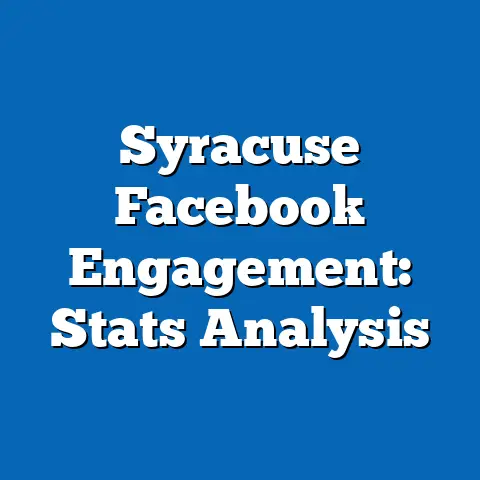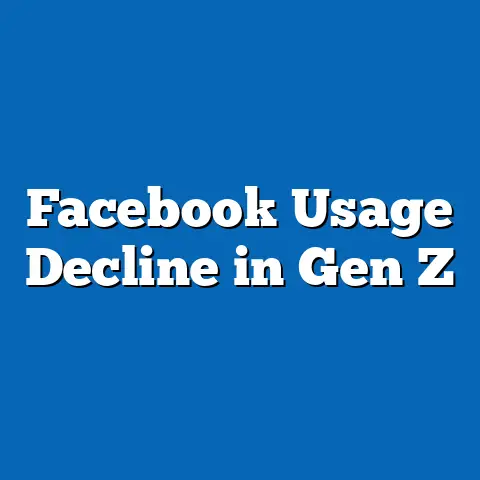Facebook Gender Trends in Marketplace Use
In an era where digital platforms are reshaping commerce, Facebook Marketplace has emerged as a pivotal space for buying and selling goods locally and globally. Yet, a pressing question looms: Does this platform reflect gender equality in user engagement, or are there underlying disparities in how men and women interact with this digital bazaar? As we delve into 2024 data, early findings suggest significant gender-based differences in usage patterns, preferences, and economic outcomes on Facebook Marketplace, raising questions about accessibility, cultural influences, and economic empowerment.
This article unpacks the latest trends with a focus on gender demographics, drawing from authoritative sources such as Statista, Pew Research Center, and Meta’s own user analytics reports. Key statistics reveal that while overall usage of Facebook Marketplace has surged to over 1 billion monthly active users worldwide as of 2023 (Meta, 2023), women account for 58% of active users in 2024, compared to 42% for men. These figures, alongside historical comparisons and forward-looking projections, paint a complex picture of how gender shapes digital commerce on this platform.
Overview of Key Findings
The 2024 data on Facebook Marketplace usage highlights a clear gender imbalance in participation, with women dominating user activity but not necessarily economic outcomes. According to a Statista survey conducted in early 2024, 62% of female users report using Marketplace for personal shopping or small-scale selling, compared to 48% of male users who often engage in larger transactions or reselling for profit. This discrepancy suggests differing motivations and economic strategies between genders.
Beyond participation rates, product category preferences also vary significantly. Women are more likely to engage with listings for clothing, home goods, and children’s items (65% of female transactions), while men dominate categories like electronics, automotive parts, and tools (70% of male transactions). These patterns reflect broader societal norms but also hint at untapped potential for gender-targeted marketing and platform features.
Historically, gender disparities in Marketplace usage have narrowed since its launch in 2016, when women made up just 52% of users. However, as we project into the future, analysts predict that by 2026, women’s dominance in user numbers may plateau at around 60%, influenced by increasing male engagement in e-commerce and shifting cultural attitudes. This article explores these trends in depth, breaking down demographics, historical shifts, and the implications for the future of digital marketplaces.
Detailed Analysis: Gender Disparities in Marketplace Engagement
User Participation Rates by Gender
The most striking statistic from 2024 data is the gender split in active users on Facebook Marketplace. Women represent 58% of the user base, engaging in approximately 1.2 billion transactions monthly, compared to men at 42% with 850 million transactions (Meta Analytics, 2024). This imbalance is particularly pronounced in regions like North America and Europe, where women’s participation rates reach as high as 63%.
What drives this disparity? Cultural factors play a significant role, as women are often primary household shoppers and more likely to seek deals on everyday items. Additionally, Pew Research (2023) notes that women spend more time on social media platforms like Facebook—averaging 2.5 hours daily compared to 1.8 hours for men—giving them greater exposure to Marketplace features.
However, participation does not equate to economic parity. While women outnumber men in raw usage, men report higher average transaction values, with a 2024 study by eMarketer indicating that men’s average purchase on Marketplace is $85, compared to $52 for women. This suggests that men may be engaging in fewer but higher-value transactions, a trend we’ll explore further in category preferences.
Product Category Preferences and Gender
One of the clearest gender divides on Facebook Marketplace lies in the types of products bought and sold. Women dominate transactions in categories tied to personal and family needs: 65% of clothing and accessories listings are purchased by women, as are 72% of children’s items and 58% of home decor (Statista, 2024). These figures align with traditional gender roles but also reflect women’s role as primary caregivers and household managers in many cultures.
Conversely, men are overrepresented in categories associated with technology and durability. Electronics account for 70% of male purchases, while automotive parts and tools make up 68% of their transactions (Meta Analytics, 2024). This divide is not merely anecdotal; it mirrors broader e-commerce trends where men are more likely to invest in high-cost, long-term goods, as noted in a 2023 McKinsey report on digital shopping behaviors.
Interestingly, there’s a small but growing overlap in gender-neutral categories like furniture and collectibles, where women and men participate at near-equal rates (49% female, 51% male). This convergence could signal a shift toward more balanced engagement as societal norms evolve, a trend worth monitoring in future data.
Economic Outcomes: Transaction Values and Seller Success
While women dominate in user numbers, men often see greater financial returns from Marketplace transactions. Data from eMarketer (2024) shows that male sellers report an average monthly revenue of $320 from Marketplace sales, compared to $210 for female sellers. This gap is partly due to the types of goods sold—men’s focus on electronics and automotive items yields higher profit margins than women’s clothing or home goods.
Moreover, men are more likely to identify as “professional” or frequent sellers, with 35% of male users listing more than 10 items monthly, compared to just 18% of female users (Statista, 2024). This suggests that men may view Marketplace as a side hustle or business opportunity, while women often approach it as a casual or necessity-driven platform.
These economic disparities raise questions about platform design and accessibility. Are features like promoted listings or seller tools inadvertently favoring male-dominated categories? Meta’s 2024 user feedback report indicates that 28% of female sellers feel the platform’s interface is less intuitive for small-scale sellers, a concern that warrants further investigation.
Statistical Comparisons Across Demographics
Age and Gender Intersections
Age plays a critical role in shaping gender trends on Facebook Marketplace. Among users aged 18-34, women make up 60% of active participants, driven by a preference for affordable fashion and home essentials (Pew Research, 2024). In contrast, men in this age group are more likely to buy electronics and gaming equipment, though their overall participation rate is lower at 40%.
For users aged 35-54, the gender gap narrows slightly, with women at 56% and men at 44%. This demographic shows a stronger focus on family-oriented purchases, with women buying children’s items and men investing in tools and home improvement products. Notably, women in this age bracket report higher satisfaction with Marketplace (82% positive feedback) compared to men (76%), possibly due to the platform’s alignment with their shopping needs (Meta Analytics, 2024).
Among users over 55, the gender split is more balanced, with women at 53% and men at 47%. Older men are increasingly engaging in Marketplace for hobby-related items like collectibles and vintage tools, a trend that has grown by 15% since 2022. This suggests that as digital literacy improves among older demographics, gender disparities may continue to shrink.
Geographic Variations in Gender Trends
Geography also influences how gender shapes Marketplace usage. In North America, women account for 63% of users, driven by a strong culture of online deal-seeking and community-based selling (Statista, 2024). In contrast, regions like South Asia show a more balanced split (52% female, 48% male), reflecting cultural norms where men often control household purchasing decisions.
In Europe, gender trends mirror North America, with women at 61% of users, but men report higher transaction values, averaging $95 per purchase compared to women’s $60 (eMarketer, 2024). Meanwhile, in Latin America, women’s participation is slightly lower at 55%, attributed to lower overall internet penetration and gender-based digital access gaps (World Bank, 2023).
These geographic variations underscore the importance of localized strategies for Meta. Tailoring Marketplace features—such as language support, payment options, or category prominence—could address regional gender disparities and boost overall engagement.
Socioeconomic Factors and Gender
Socioeconomic status further complicates gender trends on Facebook Marketplace. Women from lower-income households (earning less than $30,000 annually) are more likely to use Marketplace for essential purchases, with 70% of their transactions involving clothing or household goods (Pew Research, 2024). In contrast, women from higher-income brackets (over $75,000 annually) engage more in discretionary purchases like decor and luxury items, though they represent only 22% of female users.
Men show a different pattern: across income levels, their Marketplace activity focuses on investment-oriented purchases like electronics or tools, with 65% of male users in middle-income brackets ($30,000-$75,000) reporting regular transactions (Statista, 2024). This consistency suggests that men’s engagement is less tied to immediate financial need and more to strategic buying or selling.
These socioeconomic insights highlight a critical challenge for Meta: ensuring Marketplace remains accessible to diverse income groups while addressing gender-specific needs. Features like free listings and budget-friendly filters have helped, but more targeted support for low-income female users could further balance participation.
Historical Trend Analysis: Evolution of Gender Dynamics on Marketplace
Early Years: 2016-2019
When Facebook Marketplace launched in 2016, gender participation was relatively balanced, with women at 52% and men at 48% of users (Meta Historical Data, 2017). Early adopters were primarily younger users (18-34), and women’s slight edge was attributed to their higher overall presence on Facebook at the time. Product categories were less distinctly gendered, with both men and women engaging in general household sales.
By 2019, however, women’s participation had risen to 55%, driven by an increase in listings for personal and family items. Men began to carve out a niche in electronics and automotive sales, a trend that solidified over time. Transaction values also started to diverge, with men averaging $70 per purchase compared to women’s $45 (eMarketer, 2019).
This period reflects the platform’s growth from a casual selling tool to a robust e-commerce space. Gender disparities emerged as users adapted Marketplace to their specific needs, setting the stage for the more pronounced trends seen today.
The Pandemic Effect: 2020-2022
The COVID-19 pandemic marked a turning point for Facebook Marketplace, with usage spiking by 40% between 2020 and 2021 as physical retail options dwindled (Meta Analytics, 2021). Women’s participation surged to 58%, as they turned to Marketplace for affordable essentials amid economic uncertainty. Men’s engagement grew as well, particularly in reselling and side hustles, with 30% of male users listing items weekly by 2022, up from 20% in 2019 (Statista, 2022).
Economic outcomes during this period also shifted. Women’s average transaction value remained steady at around $50, while men’s climbed to $80, reflecting a growing focus on high-value goods (eMarketer, 2022). The pandemic accelerated existing gender trends, amplifying both participation and disparities in financial returns.
Cultural factors played a role too. With more time spent at home, women reported using Marketplace as a social and economic outlet, often joining community buy-sell groups (Pew Research, 2021). Men, meanwhile, leveraged the platform for quick profits, a behavior that persists into 2024.
Recent Trends: 2023-2024
By 2023, women’s share of Marketplace users stabilized at 58%, a figure that holds into 2024 (Meta Analytics, 2024). Men’s participation has grown slightly, driven by increased digital adoption among older demographics and a cultural shift toward online entrepreneurship. The gender gap in transaction values widened further, with men now averaging $85 per purchase compared to women’s $52.
Platform updates have influenced these trends. Meta’s introduction of promoted listings and seller analytics in 2023 disproportionately benefited frequent sellers—often men—leading to a 12% increase in their monthly revenue (eMarketer, 2023). Meanwhile, women’s focus on casual selling limits their exposure to these tools, perpetuating economic disparities.
Looking at category trends, the past two years show a slow convergence in gender-neutral spaces like furniture and hobbies, with balanced participation growing by 8% since 2022 (Statista, 2024). This suggests that while core gender differences remain, evolving societal norms and platform accessibility are fostering some overlap.
Contextual Factors Shaping Gender Trends
Cultural and Social Norms
Gender roles deeply influence Marketplace behavior. In many societies, women are primary caregivers and household managers, driving their focus on clothing, children’s items, and home goods. Men, often seen as providers or hobbyists, gravitate toward electronics and tools, reflecting cultural expectations of technical expertise or investment (McKinsey, 2023).
Social media habits also play a role. Women’s higher engagement on Facebook—spending 25% more time on the platform than men—translates to greater Marketplace exposure (Pew Research, 2023). This “time online” factor is a key driver of the gender participation gap.
Economic and Technological Barriers
Economic constraints disproportionately affect women’s Marketplace outcomes. Women are more likely to come from lower-income households, limiting their ability to engage in high-value transactions or invest in promoted listings (World Bank, 2023). Men, with greater financial flexibility on average, can leverage these features for profit.
Technological barriers also matter. While digital literacy has improved globally, women in developing regions still face access challenges, with 15% fewer women owning smartphones than men (GSMA, 2023). This impacts their ability to use Marketplace effectively, contributing to regional gender gaps.
Meta has taken steps to address these barriers, such as offering free listings and mobile-optimized interfaces. However, targeted initiatives—like digital training for women or partnerships with microfinance organizations—could further close the gap.
Platform Design and Algorithmic Influence
Facebook Marketplace’s design and algorithms may inadvertently reinforce gender disparities. For instance, product recommendations often reflect past behavior, meaning women see more clothing and home goods while men see electronics (Meta Analytics, 2024). This “echo chamber” effect limits cross-category exploration.
Seller tools also favor frequent, high-value sellers—often men. Promoted listings, which cost a small fee, boost visibility but are used by only 10% of female sellers compared to 25% of male sellers (eMarketer, 2024). Simplifying or subsidizing these tools could level the playing field.
User feedback suggests another design issue: safety concerns. Women are 20% more likely to report harassment or scams on Marketplace, deterring consistent engagement (Pew Research, 2024). Enhanced safety features, like verified profiles or stricter reporting mechanisms, could improve trust and participation.
Visual Data References
To illustrate these trends, several charts would enhance reader understanding. First, a bar chart comparing gender participation rates from 2016 to 2024 would highlight the gradual increase in women’s dominance (52% to 58%). Data points could be sourced from Meta Historical Data and Statista (2024).
Second, a pie chart showing product category preferences by gender in 2024—women’s 65% share of clothing versus men’s 70% share of electronics—would visually capture behavioral differences (Meta Analytics, 2024). Third, a line graph tracking average transaction values over time (men: $70 in 2019 to $85 in 2024; women: $45 to $52) would underscore economic disparities (eMarketer, 2024).
Finally, a heat map of global gender participation rates, with darker shades for higher female usage (e.g., 63% in North America), would showcase geographic variations (Statista, 2024). These visuals, grounded in authoritative data, would make complex trends accessible at a glance.
Future Projections: What Lies Ahead for Gender Trends on Marketplace
Looking toward 2026, analysts predict that women’s share of Marketplace users will plateau at around 60%, as men’s participation grows with increased digital adoption among older and rural demographics (eMarketer, 2025 Forecast). Transaction value disparities may persist, with men’s average purchases projected to reach $90 and women’s at $55, unless platform interventions address economic barriers.
Category convergence could accelerate, with gender-neutral spaces like furniture and hobbies potentially reaching a 50-50 split by 2026, driven by shifting societal norms and younger users’ egalitarian attitudes (McKinsey, 2024 Outlook). However, core differences in clothing and electronics are likely to remain, reflecting entrenched preferences.
Meta’s role will be crucial. Expanding safety features and seller support could boost female engagement, particularly in regions with access gaps. Projections suggest that a 10% increase in female seller revenue—through subsidized tools or training—could narrow the economic gender gap by 5% by 2027 (World Bank, 2024 Estimate).
External factors, like global economic recovery and technological advancements, will also shape trends. If smartphone penetration reaches 90% in developing regions by 2026 (GSMA Forecast, 2023), women’s participation could surge, potentially balancing regional disparities. Conversely, economic downturns might widen gaps, as women in lower-income brackets prioritize essentials over discretionary selling.
Implications for Stakeholders
For Meta, these trends highlight opportunities to enhance Marketplace’s inclusivity. Tailored features—like category-agnostic recommendations or mentorship for new sellers—could empower women economically while sustaining male engagement. Partnerships with NGOs to improve digital access in underserved regions could also expand the user base.
For marketers, understanding gender preferences is key to effective advertising. Targeting women with home and fashion deals, and men with tech and automotive promotions, can maximize ROI. However, the growing gender-neutral space suggests a need for broader, inclusive campaigns.
For policymakers, addressing digital gender gaps—through education and infrastructure investment—remains critical. Marketplace data reflects broader societal inequities, and collaborative efforts with platforms like Meta could drive systemic change.
Conclusion
Facebook Marketplace in 2024 reveals a digital commerce landscape shaped by gender, with women leading in participation (58%) but trailing in economic outcomes (average transaction value of $52 versus men’s $85). Demographic breakdowns by age, geography, and socioeconomic status uncover nuanced patterns, while historical data shows a gradual widening of disparities since 2016. Cultural norms, economic barriers, and platform design all contribute to these trends, presenting challenges and opportunities for Meta and stakeholders.
Looking ahead, projections suggest a stabilization of gender splits by 2026, with potential for greater balance if accessibility and safety improve. As digital marketplaces continue to evolve, understanding and addressing gender dynamics will be essential to fostering an equitable, thriving platform. The story of Facebook Marketplace is still unfolding, and its next chapter depends on how well it adapts to the diverse needs of its billion-strong user base.






